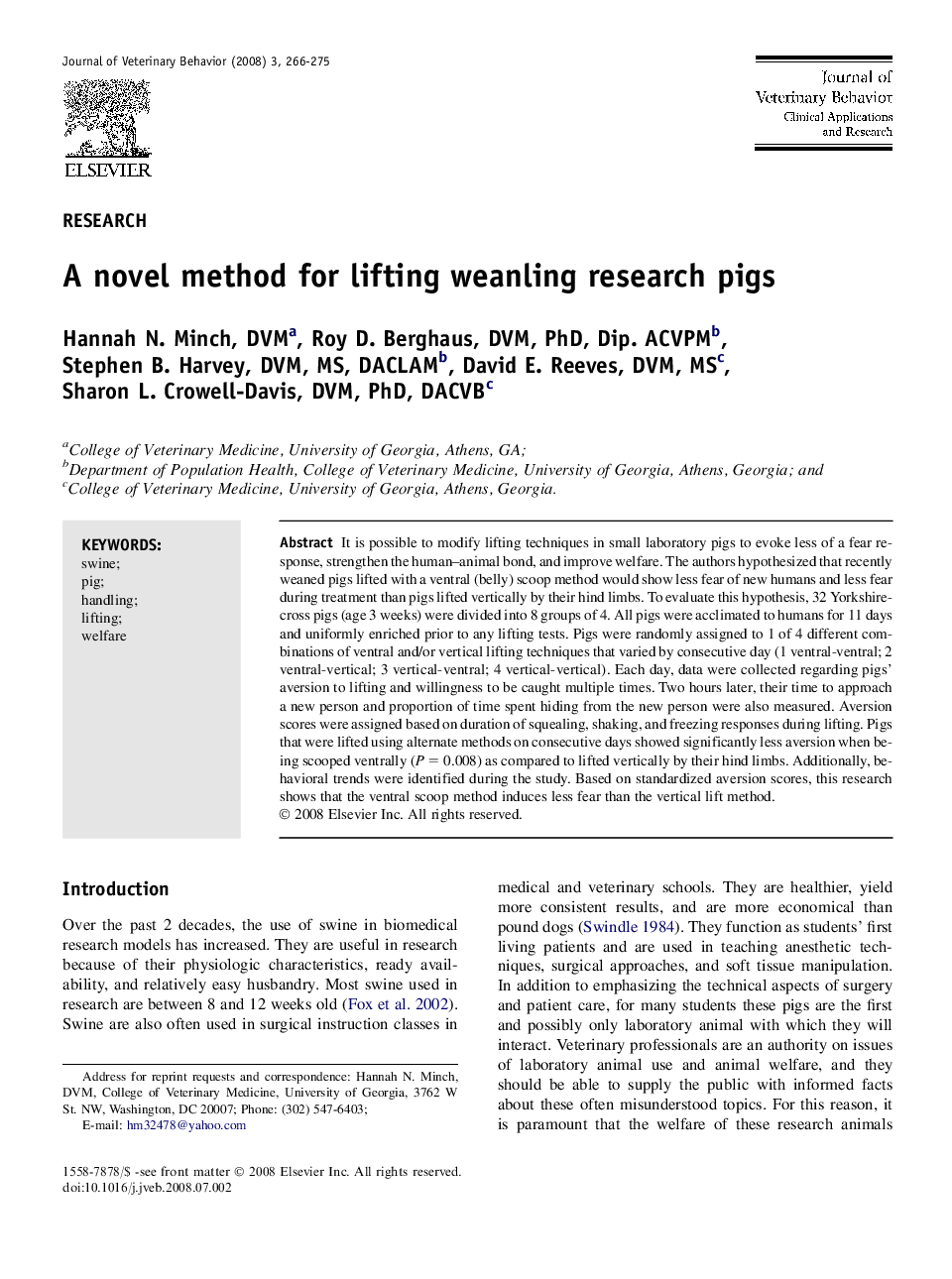| Article ID | Journal | Published Year | Pages | File Type |
|---|---|---|---|---|
| 2399940 | Journal of Veterinary Behavior: Clinical Applications and Research | 2008 | 10 Pages |
It is possible to modify lifting techniques in small laboratory pigs to evoke less of a fear response, strengthen the human–animal bond, and improve welfare. The authors hypothesized that recently weaned pigs lifted with a ventral (belly) scoop method would show less fear of new humans and less fear during treatment than pigs lifted vertically by their hind limbs. To evaluate this hypothesis, 32 Yorkshire-cross pigs (age 3 weeks) were divided into 8 groups of 4. All pigs were acclimated to humans for 11 days and uniformly enriched prior to any lifting tests. Pigs were randomly assigned to 1 of 4 different combinations of ventral and/or vertical lifting techniques that varied by consecutive day (1 ventral-ventral; 2 ventral-vertical; 3 vertical-ventral; 4 vertical-vertical). Each day, data were collected regarding pigs’ aversion to lifting and willingness to be caught multiple times. Two hours later, their time to approach a new person and proportion of time spent hiding from the new person were also measured. Aversion scores were assigned based on duration of squealing, shaking, and freezing responses during lifting. Pigs that were lifted using alternate methods on consecutive days showed significantly less aversion when being scooped ventrally (P = 0.008) as compared to lifted vertically by their hind limbs. Additionally, behavioral trends were identified during the study. Based on standardized aversion scores, this research shows that the ventral scoop method induces less fear than the vertical lift method.
